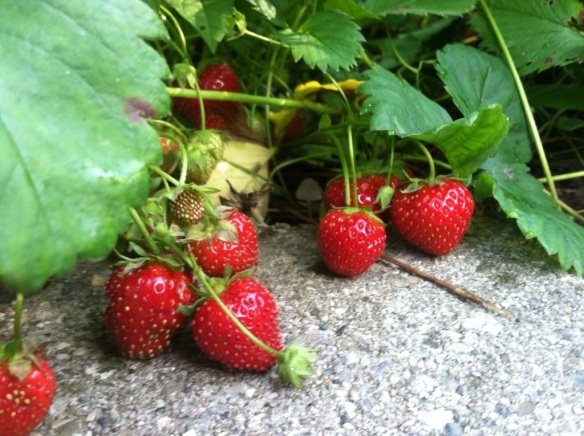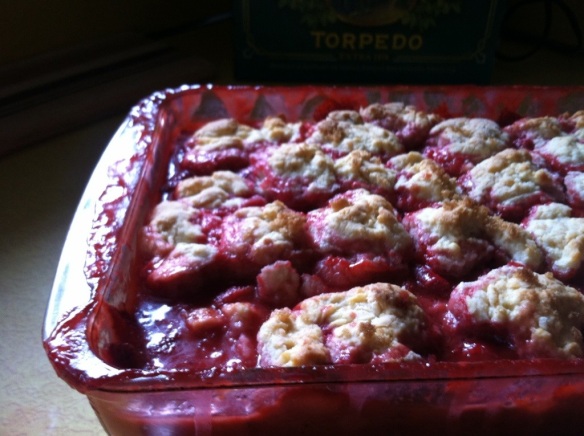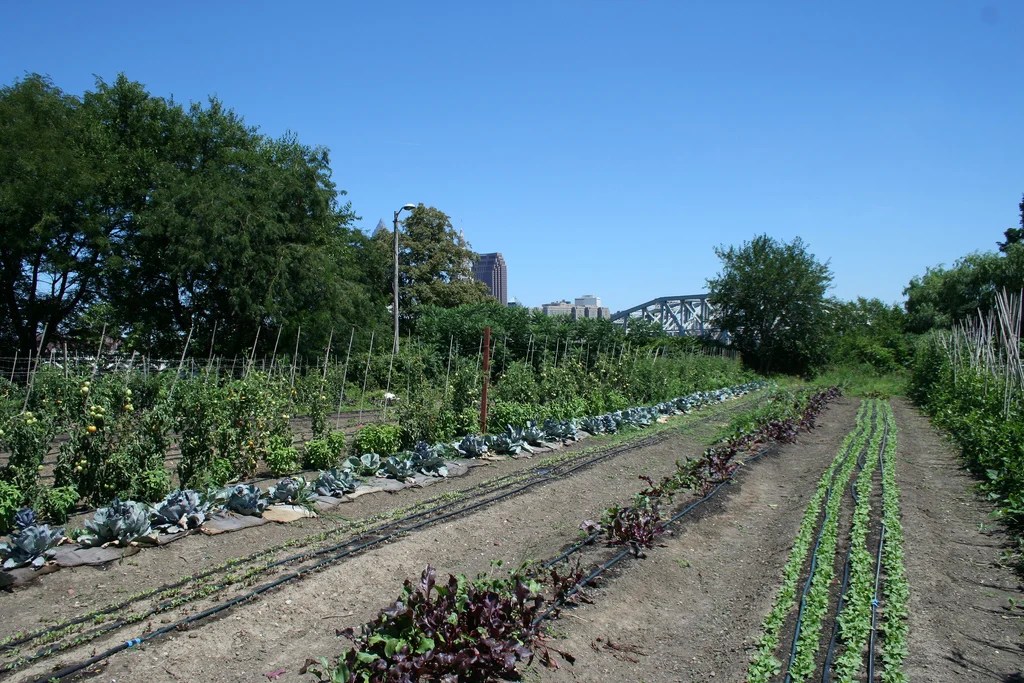
Looking out over the 8×10′ plot of strawberry plants in my backyard, I can only imagine John Lennon was inspired by this very scene. Alright, alright — that’s how it feels, at least. For every square inch of space, there seem to be three ripe strawberries, begging to be plucked from the stem; the rows having long since blurred into one giant tangle of plants. It is my first day in Bloomington, IN, my new home for the next few years, and these berries have got to be a good omen. My house has no furniture, I have no job, and I know not a soul, but there is a bounty of strawberries commanding my attention.

(Lest you know me, and love me, and are worried that my only friends are strawberries — rest assured, I now know at least 12 souls in Bloomington.)
Over several days, I harvest what I can, maybe 4 or 5 quarts, stashing them in the fridge for grazing, and browse recipes to transform their already perfect flavor. Fruit leather, I think. But, do you know how expensive parchment paper seems when you’re un-gainfully unemployed? $4 for something from the grocery store I can’t eat or imbibe? Maybe next year. Strawberry pie, I think, but the thought of trying to craft the perfect homemade crust right now makes it just unappealing enough. Finally, I settle on strawberry cobbler — berries tossed in sweetened cream with drops of biscuit dough baked on top. And? It is so good, like all the pieces of a strawberry shortcake baked into one delicious dish. Somehow totally worth the kitchen catastrophes it precipitated…

It’s the day after making this fantastic cobbler and I am writing from the midst of its aftermath. There’s the blister burn on my right arm, the fan pointed conspicuously toward the fire alarm, and the bubbles of black sugar carbon dotting the bottom of the stove. Let’s just say I was not prepared to make a cobbler, I didn’t know. I just wandered in, tempted by the promise of deliciousness So, in case you are want to do the same, STOP, right now.
Before you chop a single berry, cut a single cube of butter, before you turn the dial on the oven, get yourself some tinfoil, or a baking sheet, or best yet, a baking sheet lined with tinfoil and place it on a rack below the place where you plan to nestle your cobbler for baking. Because, there is a very good chance that the carefully crafted filling in this dish will boil over during baking, like sugary lava in a home chemistry experiment. Turns out this is a common cobbler phenomenon. But, somehow, it’s totally worth it.
Strawberry Cobbler
Recipe from: Drick’s Rambling Cafe
For the crust
1 3/4 cup all purpose flour
1 teaspoon salt
1 tablespoon baking powder
2 tablespoons sugar
6 tablespoons cold butter
3/4 cup milk (I used a little less, add slowly until you have the right consistency)
For the filling
1 cup sugar
1/3 cup all-purpose flour
1 teaspoon salt
1/2 cup cream (I used half-n-half, which may have made a thinner filling but was still great)
3 tablespoons fresh lemon juice
2 quarts fresh strawberries, stemmed and cut in half
For the topping
2 tablespoons brown sugar
2 tablespoons butter
Make the crust by combining the dry ingredients in a 2-quart mixing bowl. Using a pastry blender (or your fingers if short on kitchen utensils!), cut the cold butter into the mixture until it has the consistency of coarse meal. Add milk and gently knead just until a ball forms. Refrigerate for 30 minutes.
Preheat oven to 400 degrees.
In a 2-quart mixing bowl, combine sugar, flour, and salt for filling. Slowly whisk in cream, lemon juice and stir in the strawberries.
Place fruit in 9 x 13 inch glass baking dish. Bake for 15 minutes, or until fruit is bubbly. Stir mixture in the dish. (Mixture will look very soupy. Dont panic, don’t lose faith. It’ll all come together).
Pinch dough into quarter inch disks about the size of half dollars and place on top of berry mixture covering almost the entire surface. Dot with butter. Sprinkle with brown sugar.
Return to oven and bake until golden brown, about 30 minutes.





